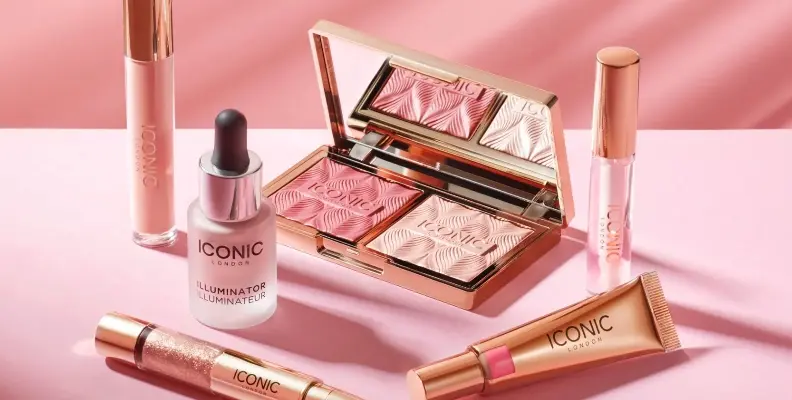ICONIC London triples its ROI from email in less than a year by switching to Klaviyo from DotDigital

12.5x
ROI from Klaviyo email and SMS, YOY
197%
increase in UK SMS revenue YOY
130%
increase in email open rates
ICONIC London is a luxury make-up brand known for its highlighting products that give skin a dewy glow. The brand was founded in 2015 and quickly became famous on Instagram and TikTok through endorsements from celebrities, professional make-up artists and glow-getting influencers. ICONIC switched from DotDigital to Klaviyo in 2021 and uses the platform for global email and UK SMS.
Learn how ICONIC has almost doubled CRM revenue from its glow-giving vegan and cruelty-free make-up
Challenge
In 2021 ICONIC was seeing terrific success from its social and influencer marketing programme, with 1.5 million Instagram followers and A-list celebrity and influencer endorsements driving sales. However, email was not a top revenue generating source, bringing in just 8% of the brand’s revenue. Unsurprisingly, when ICONIC appointed a Global Digital Director that year, she could see there was a lot of untapped potential.
Solution
Kathleen Loftus had worked with Klaviyo previously and knew the platform had the power to transform ICONIC’s email marketing into a high performing channel. Switching from DotDigital to Klaviyo was one of the first things she did in her new role.
Now ICONIC can use Klaviyo’s predictive analytics to build intelligent flows and campaigns and the approach has paid off – revenue from CRM has increased 42% in under a year. What’s more, the brand has unlocked powerful growth marketing possibilities by integrating Klaviyo with other marketing tools, such as MentionMe and Wunderkind to acquire and retain customers.
Klaviyo’s advanced segmenting and clear analytics have allowed us the flexibility to target customers with market-specific content based on shopping behaviours. These crucial insights helped us dramatically increase our email and SMS revenues.
Strategy
Klaviyo’s integration with Wunderkind allows ICONIC to use the one-to-one marketing tools to track browsers who are not logged in and send them messages via email and SMS through Klaviyo. With 97% of the brand’s customers using Apple devices, the recent iOS updates had a big impact, so being able to identify anonymous traffic in this way is a game changer.
ICONIC’s glow-getters are happy to receive SMS marketing in order to be among the first to hear about new content and trends. It goes to show that FOMO – fear of missing out – can be a highly effective marketing technique! This isn’t unique to ICONIC: Klaviyo’s research on the beauty industry shows SMS was 75% more popular among customers in 2021 than it was in 2020.
In two years, I hope to see 30% of sales coming from CRM marketing channels. Based on growth we’ve seen through email and SMS, it warrants that. The more advanced targeting and testing we can do with Klaviyo and our partner integrations, the more confident I feel about achieving this goal.